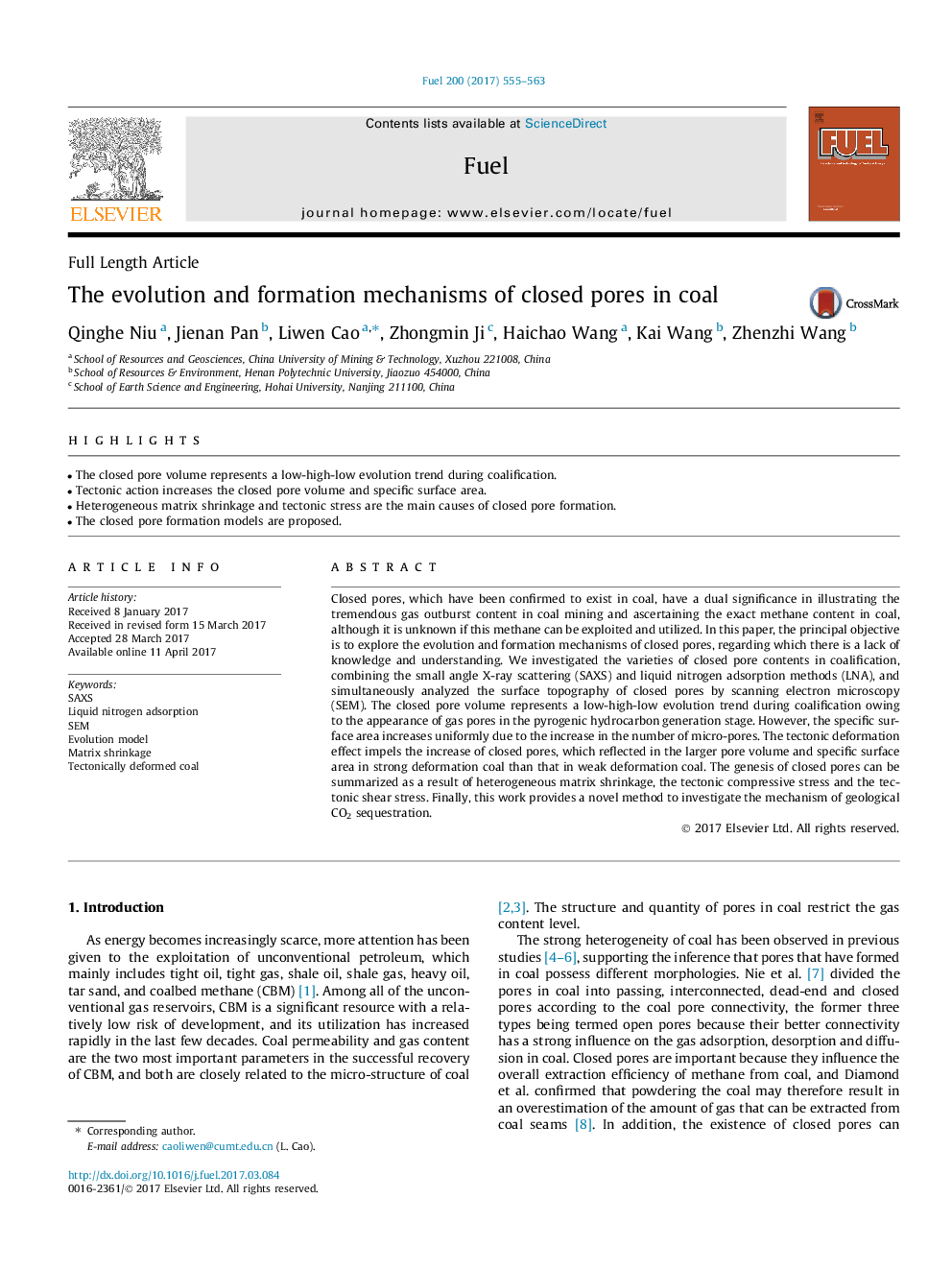| Article ID | Journal | Published Year | Pages | File Type |
|---|---|---|---|---|
| 6473792 | Fuel | 2017 | 9 Pages |
â¢The closed pore volume represents a low-high-low evolution trend during coalification.â¢Tectonic action increases the closed pore volume and specific surface area.â¢Heterogeneous matrix shrinkage and tectonic stress are the main causes of closed pore formation.â¢The closed pore formation models are proposed.
Closed pores, which have been confirmed to exist in coal, have a dual significance in illustrating the tremendous gas outburst content in coal mining and ascertaining the exact methane content in coal, although it is unknown if this methane can be exploited and utilized. In this paper, the principal objective is to explore the evolution and formation mechanisms of closed pores, regarding which there is a lack of knowledge and understanding. We investigated the varieties of closed pore contents in coalification, combining the small angle X-ray scattering (SAXS) and liquid nitrogen adsorption methods (LNA), and simultaneously analyzed the surface topography of closed pores by scanning electron microscopy (SEM). The closed pore volume represents a low-high-low evolution trend during coalification owing to the appearance of gas pores in the pyrogenic hydrocarbon generation stage. However, the specific surface area increases uniformly due to the increase in the number of micro-pores. The tectonic deformation effect impels the increase of closed pores, which reflected in the larger pore volume and specific surface area in strong deformation coal than that in weak deformation coal. The genesis of closed pores can be summarized as a result of heterogeneous matrix shrinkage, the tectonic compressive stress and the tectonic shear stress. Finally, this work provides a novel method to investigate the mechanism of geological CO2 sequestration.
